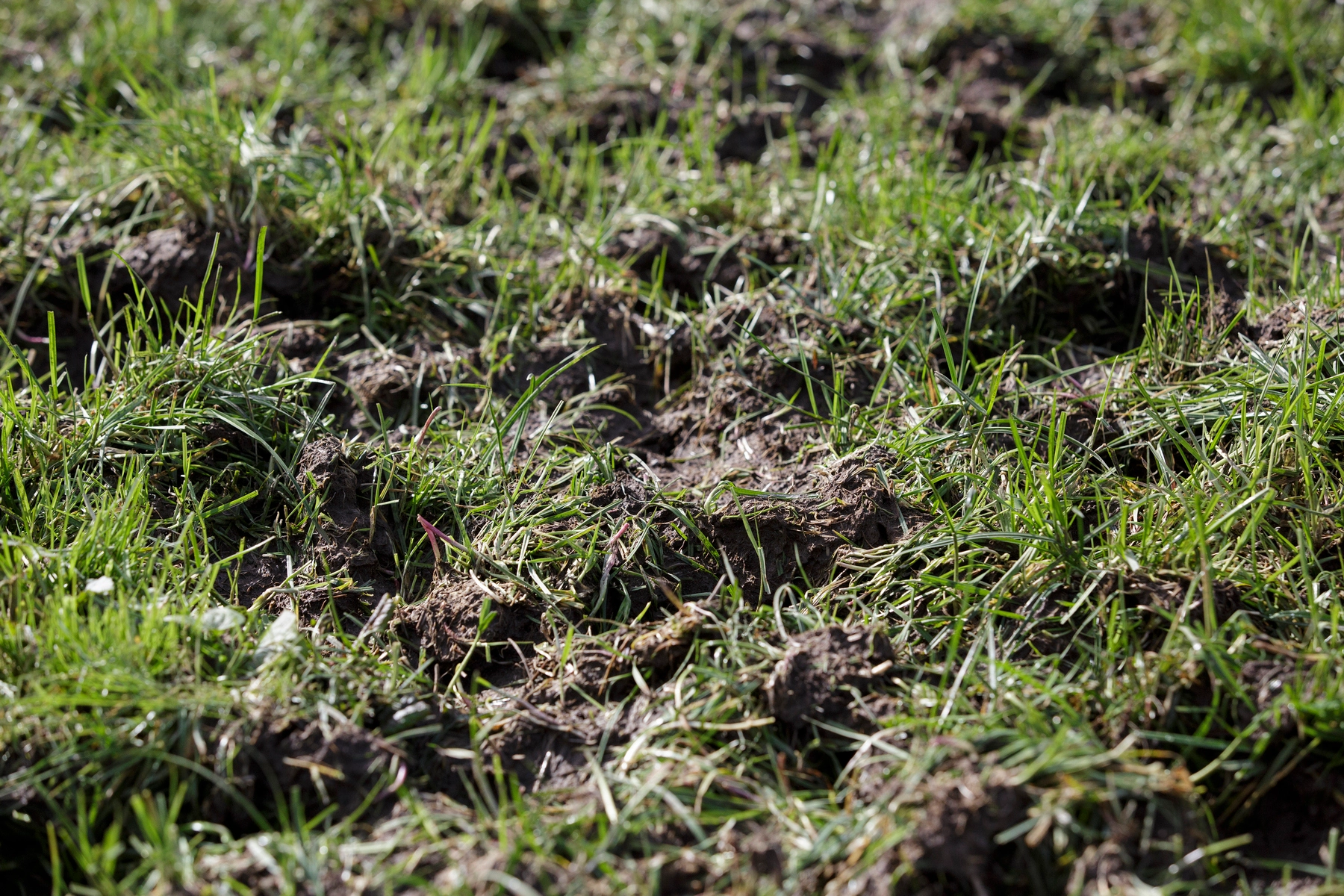Keeping an eye on weather reports is part and parcel of farming, but heavy and prolonged rainfall can affect the persistency of perennial ryegrass, especially when fields remain waterlogged for excessive periods of time. Although we can’t control the weather, Germinal grassland expert Diarmuid Murphy explains why perennial ryegrass can’t tolerate long periods of flooded fields and discusses how to correct issues.
Flooding advice for farmers
If your swards have had water lying on them for long periods of time, it is important to assess the damage in the flooded fields once the water recedes. Flooding can result in soil capping, which is a hardened or almost sealed layer of soil, which negatively impacts infiltration and can increase the risk of runoff in the future or soil compaction and this needs to be assessed.
Assess damage
Water can rise and fall in flooded grassland, so it’s likely that swards will survive if they aren’t submerged for long periods. Deeper rooting grasses, such as tall fescues, tend to survive better than the shallower rooting perennial types. New reseeds are particularly susceptible due to the small root structure.
Once ground conditions improve, it is then important to assess the level of damage – the options are to reseed the entire field or oversow to improve the density and yield performance of those grasses that did survive and reduce the risk of weed ingress into the open patches.
While grass has the potential to survive for up to 21 days, it could be stressed. There is also a high chance that nutrients have been leached from the soil.
So, it is important to wait until soil trafficability has improved before nutrients are applied and there is no point in applying nutrients where the desired species have significantly declined.
Reseed with tetraploids and diploids
If weeds become an issue in flood-risk fields, then they need to be addressed. View our Grassland weed control guide for detailed management advice. In this case, a full reseed may give better results.
However, it is important to remember that many herbicides have residual effects on subsequent seed germination for both grasses and clovers, so it is always important to read the label in detail.
While tetraploid ryegrasses produce upright leaves that are easy to graze, this open growth habit means swards are vulnerable to weed ingress and poaching.

Tetraploids are generally quicker to establish and work well in overseeding situations where desirable species are still dominant. Germinal has a tetraploid mixture specifically designed for overseeding – find it here.
Diploid ryegrasses create denser swards and offer superior ground cover, helping to resist poaching in wet soils while also lowering the threat of weeds.
For more open swards or those with low weed burden and a good percentage of desirable grass, overseeding with a diploid and tetraploid mixture will result in a well-balanced grass sward.
If the sward is less open, then a tetraploid mixture would be better for overseeding. This is cheaper than a full reseed has a shorter turn-around time, allowing the field back into the grazing rotation quicker.

Where fields are on a flood plain and susceptible to frequent flooding events or where perennial ryegrass is struggling to survive, the use of soft-leaf tall fescues may prolong the persistency of the sward.
Although nothing will survive indefinitely underwater, these fescues tolerate flooding or water logging better than the shallower rooting perennial ryegrasses. Germinal has a mixture of tall fescues which perform well in these conditions – ask below for details.
Get advice on flooded fields
Contact us now to discuss grassland management and suitable mixture options to mitigate the future impact of flooded farmland.
